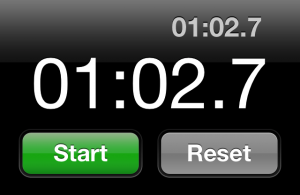Three Factors to Determine Your Video Time
 I’ve been encouraged lately that our clients and prospects have been coming around on video time. It used to be that everyone wanted to create a “short” 10-minute video. That number started dropping a few years ago to a “short” 5-minute video. I’m happy to report the downward trend has continued.
I’ve been encouraged lately that our clients and prospects have been coming around on video time. It used to be that everyone wanted to create a “short” 10-minute video. That number started dropping a few years ago to a “short” 5-minute video. I’m happy to report the downward trend has continued.
In case you didn’t get that, 10-minutes isn’t short and neither is 5-minutes. I’d define a short video as anything 1:30 or less, but really… 1-minute or less. How did I come to that number? Well, you can sit on Google and sift through tons of market research… or… you can use your good old fashion common sense.
Factor one
You can base that common sense on a few factors. First, where are you showing your video? Is it going to reside on your website? YouTube or Vimeo? Will it be part of an email campaign or will you pump it out via social media? Are you going to show it at a conference or trade show? A big company-wide meeting? A sales presentation?
Where you show it is very important to determine your video time. Chances are it might be a combination of some of those options. If that’s the case, pick the most important one. If it’s going to reside on your website, I’d say you’re safe with something 2-minutes or less… maybe even 3-minutes or less. The reasoning behind that is simple. Someone sought you out. They want to learn more about your business, so they’re an interested audience. That means you can get away with giving them a little longer video.
On the other hand, if the video is primarily for an email or social media campaign, you better keep it short. 60-seconds or less. Why? Because you’re pushing this video on them. Chances are they’ll look at the length of the video. If it’s longer than a minute, they probably won’t watch. This isn’t a motivated audience like someone who visits your website.
Finally, if you have a captive audience like at a meeting or trade show, have at it. The time is totally up to you, but I’d stick to something 4-minutes or less. They might not be able to go anywhere, but they can mentally tune-out or turn on their smart phone to surf away. Hopefully, if they’re a part of this type of audience, they’re interested in the subject matter. Feel free to give them a little more.
Factor two
The next factor is who’s your audience. Is it someone intimately familiar with the subject matter your video is covering? Is it someone in the C-suite? A novice?
If experts are the people you’re targeting, a little longer video is in order. Again, this is a motivated audience. 3-minutes or less is probably fine. They want/need more details, so feel free to give it to them. If it’s someone in the C-suite or a flat-out novice, your video should be on the short side. You don’t want to overwhelm this type of audience with too much. Just tease them a little to peak their interest.
Factor three
How good is the video? Be honet with yourself. Is it something Sue in marketing or Ted in accounting is doing on the side? Is it something you’re having professionally produced? Have you hired a skilled storyteller, or simply someone who has the technical expertise to shoot and edit video?
This is important because no matter what your video length, people are less likely to sit through crap. If the video doesn’t provide a well-told story, you’re going to lose your audience 10, 15, 30-seconds into the video. Just like with anything else, the better your content, the more effective it will be.
See… common sense. Think about those factors, respect your audience and the video time will reveal itself.
–Tony Gnau
Tony Gnau is a three-time Emmy-winning journalist. He is also the founder and chief storytelling officer at T60 Productions. T60 has won 11 Telly Awards for its work over the last eight years.

